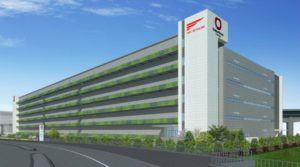UNIQLO: Transformation to a Digital Consumer Retail Company

To respond quickly to the demanding customer needs, UNIQLO has digitized its supply chain to transform into Digital Consumer Retail Company. Does this change accelerate their growth to surpass its competitors in global fast-fashion market?
UNIQLO, a global leading apparel company in the fast-fashion industry from Japan, pursues a rapid digitalization of its supply chain to provide superior value to the demanding consumers. With the full commitment of Yanai Tadashi, the CEO of UNIQLO, the company launched Ariake Project in 2017 to revolutionize its entire supply chain model with the latest technology, aiming to gather information quickly and facilitate world-class production. [1]This bold change has benefitted the business greatly – UNIQLO generated JPY 1.87 trillion in revenue with +4.2% YoY during FY 2017, the largest sales ever in the company’s history.[2]
Urgent Need of Digitalizing the Supply Chain
SPA (Speciality store retailer of Private label Apparel) has been a longstanding strength of UNIQLO.[3] In SPA, UNIQLO owns the entire supply chain process. SPA model helped UNIQLO to establish a competitive advantage in providing quality products at reasonable prices. However, in the fast-moving fashion industry where UNIQLO is still positioned below Inditex (ZARA) and H&M[4], Yanai felt the urgent need of further transforming SPA to respond quickly to the consumers in the digital age. Yanai reflects his decision to launch Ariake Project, “Today, everyone of all ages uses the internet, and that is dramatically influencing the way we shop. To stay abreast of changing needs, clothing manufacturer-retailers like ourselves have to mold a new, dynamic industry unfettered by conventional barriers between business fields.”[5]
Ariake Project
Launched in February 2017, Ariake Project opened the largest warehouse the company owns in Ariake City in Japan, moving the head office there for merchandising, R&D, product development, and marketing teams to function together on one floor.[6] This change helps the company to gather and share information on customer needs across the whole supply chain at the fastest speed, encouraged by the quicker decision-making process. This also enables the company to put a tight control and management on the logistics required for its supply chain. Ariake Project aims to enhance technology to capture the consumer needs at real stores. UNIQLO partnered with Accenture PLC to practice Big Data strategy in measuring various consumer behaviors in stores across the country.[7] Yanai thinks that combining the Big Data of who purchased what at which located store will give the company a better know-how to develop a production plan and cycle that are more tailored and flexible to the consumers. UNIQLO has not yet succeeded in fully utilizing the gathered data however, Yanai believes that the early investment in the technology and an effort in gathering a large volume of data continuously will help the product development to be driven by data in the medium term.
Integration of “Real” and “Virtual”
In the short term, Ariake Project emphasizes on the integration of physical stores and online stores operation to push the company to become a true digital consumer retail company.[8] Yanai defined the vision to make UNIQLO always accessible by closing the gap of the real stores and online stores, and believed that this will be another value-add of the company in the competitive landscape. To accomplish this, UNIQLO launched several technological innovations to digitize the downstream side of the supply chain, from the retailer to customer. UNIQLO established a new distribution system by expanding online store. Online store now offers customers same-day or next-day delivery service, as well as the service for them to pick up their orders at the nearby UNIQLO stores or local convenience stores. The company also started the Semi-Order service online that delivers custom-made clothing to consumers within a week, and this pushed the company to pursue their value proposition of creating and providing LifeWear for everyone.[9]
Embracing E-Commerce & Scaling the Digitized Supply Chain
Despite the technological innovations that UNIQLO executed, the challenge still remains at boosting e-commerce sales. Online sales currently accounts for 5% of the total revenue, while the industry standard makes up 11%.[10] As Yanai holds up the goal of reaching 30% in near future[11], it is critical that UNIQLO accelerates its speed in improving the e-commerce experience for consumers. My recommendation is to invest in mobile, creating a better website and application to provide consumers an excellent shopping experience. UNIQLO’s superior customer service should not be limited only in physical stores – to upgrade the integration of “Real” and “Virtual”, the mobile e-commerce space should embrace the Artificial Intelligence and machine learning technology to become a personalized store for customers. Another recommendation is to scale the Ariake Project globally. UNIQLO’s international success if fueled by Greater China and Southeast Asia, however, USA is the market UNIQLO most struggles.
Though two questions still remain: Are these technological innovations powerful enough to make UNIQLO #1 globally? How can UNIQLO compete and surpass the rapid growth of its rivals ZARA and H&M in digitizing the supply chain to be a digital consumer retail company?
[Word Count: 800]
[1] Fastretailing.com. (2017). CEO Message | FAST RETAILING CO., LTD.. [online] Available at: http://www.fastretailing.com/eng/about/message/ [Accessed 15 Nov. 2017].
[2] Fastretailing.com. (2017). Results Summary | FAST RETAILING CO., LTD.. [online] Available at: http://www.fastretailing.com/eng/ir/financial/summary.html [Accessed 13 Nov. 2017].
[3] Fastretailing.com. (2017). UNIQLO Operations Business Model, Expanding Internationally Store Development in Japan Product Creation. [online] Available at: https://www.fastretailing.com/eng/ir/library/pdf/ar2011_en_08_n.pdf [Accessed 15 Nov. 2017].
[4] Fastretailing.com. (2017). Top Interview. [online] Available at: http://www.fastretailing.com/jp/ir/library/pdf/ar2016_04.pdf [Accessed 14 Nov. 2017].
[5] Fastretailing.com. (2017). Interview with the CEO | FAST RETAILING CO., LTD.. [online] Available at: http://www.fastretailing.com/eng/ir/direction/interview.html [Accessed 14 Nov. 2017].
[6] Reuters Japan. (2017). 焦点:社運かけるユニクロ革命、早期の収益効果が課題に. [online] Available at: https://jp.reuters.com/article/focus-uniqlo-revolution-idJPKBN18Q0U1 [Accessed 15 Nov. 2017].
[7] 直哉, 牧. (2017). 「すべて変わる」ユニクロの新サプライチェーン. [online] Nikkei Business Online. Available at: http://business.nikkeibp.co.jp/atcl/report/15/258308/102500053/?P=2 [Accessed 15 Nov. 2017].
[8] Fastretailing.com. (2017). Top Interview. [online] Available at: http://www.fastretailing.com/jp/ir/library/pdf/ar2016_04.pdf [Accessed 14 Nov. 2017].
[9] Fastretailing.com. (2017). Interview with the CEO | FAST RETAILING CO., LTD.. [online] Available at: http://www.fastretailing.com/eng/ir/direction/interview.html [Accessed 14 Nov. 2017].
[10] Reuters Japan. (2017). 焦点:社運かけるユニクロ革命、早期の収益効果が課題に. [online] Available at: https://jp.reuters.com/article/focus-uniqlo-revolution-idJPKBN18Q0U1 [Accessed 15 Nov. 2017].
[11] Fastretailing.com. (2017). Interview with the CEO | FAST RETAILING CO., LTD.. [online] Available at: http://www.fastretailing.com/eng/ir/direction/interview.html [Accessed 15 Nov. 2017].






With the digital revolution of the retail industry and increased access to information and marketing technologies, it is of vital importance for companies to focus more on the customer relationship than the products. Simply going digital is the norm across industries nowadays. One way UNIQLO can compete with Zara and H&M is to rethink its business model and leverage technology to reinvent the in-store customer experience. UNIQLO can attract new customers and build brand loyalty through the use of interactive digital displays, touchscreens, digital storefronts, virtual dressing rooms and kiosks to order out-of-stock items. Changes such as these, along with frequent innovation and e-commerce exclusives, will surely spur growth and help Yanai achieve his goal of growing online sales to 30% of the total mix.
Offering same day and next day delivery service will be a significant value add for Uniqlo. By allowing customers to obtain their purchases the same day, this service eliminates the competitive advantage retail stores in terms of quick delivery. While this service may cannibalize sales in physical stores, there is potential for it to entice new customers to the brand, particularly ones that consider traveling to a physical store inconvenient and need their purchases quickly.
I do not think digitalization alone will propel Uniqlo to #1, as Zara and H&M can also embrace digitalization. It will take a variety of operational changes, such as just in time inventory, to compete with Zara in particular.
I definitely agree with Brandon’s comment that going digital is the industry norm, particularly when it comes to sales and marketing. I believe that Uniqlo’s competitive advantage lies in its ‘no-frills’ approach to fashion. Unlike Zara and H&M, which focus on fast-changing fashion trends, Uniqlo focuses on everyday, ‘basic’ products that are cater to customers’ needs. Given that ‘basic’ product design is a more straightforward process for Uniqlo, its production times are also generally lower.
As a result, I believe that Uniqlo should focus its production and supply chain development efforts on two key areas. First, it should try to maximize the quality of its designs. High quality manufacturing of ‘basic wear’ in combination with speed of delivery to market can be a winning advantage for Uniqlo. Second, it should introduce customization capabilities in its production line. Given that the company sells products that are rooted in people’s day-to-day lives, its manufacturing process should allow for increasing personalization, without compromising speed of delivery to market. Both of these goals will require a more innovative approach to production and supply chain management. If successful, however, they could prove to be crucial for Uniqlo’s future growth and competitiveness.
E-commerce is a trend that is undeniable. Store inventory visibility, same day pick up are some capabilities that will be key as Uniqlo goes from private labels to more fast fashion.
What I find is that they have centralized their Merchandising, R&D, Production and Marketing under one roof. Having doing multiple consulting projects in the apparel, the biggest issue I find the 4 critical functions listed above are completely scatter brained. If UNIQLO has indeed succeeded in bringing them together and has a foundation of sales and inventory data that all teams can pull off, they are in amazing position to respond to the customer signal faster.
Fast fashion requires quick sensing of customer demand and quick production turn around to prevent out of stocks. I think UNIQLO should only double down on building out digital capacity along it’s supply chain to increase nimbleness and speed.
Thank you for sharing! This topic is extremely relevant across several sectors. In order to compete in the fast fashion segment, supply chain digitalization is key. UNIQLO’s value chain can be divided in three main blocks: design, manufacturing, and distribution. I believe the company is working on relevant initiatives in the first and the third elements. However, I am interested in what are the company’s plans to improve the second stage. Based on what other companies are doing, I would expect UNIQLO to heavily invest in automation of its production facilities and reinforcing the relationship with its suppliers to decrease lead times for raw material.
Regarding the question, I believe UNIQLO can certainly compete against Zara and H&M, however, in this sector, the main competitive advantage is having the shortest time to market as possible. Shipping production from Asia to around the world has a significant impact on the “design to shelf” throughput time. Therefore, I would recommend UNIQLO to evaluate the feasibility of replicating the “Asian supply and manufacturing infrastructure1” in other countries, especially in the US.
[1] http://www.uniqlo.com/sg/corp/production/
Interesting article, thanks for shedding light on that topic Satoshi! I agree that moving to the digital world is definitely the right move, but Uniqlo’s model is very unique and I believe that they should centralize their digital strategy around their core competencies. Uniqlo is one of the very few brands that penetrate markets with low prices, yet manages to preserve its brand image and does not fall into the “retail discounters” category. I think they should focus on their low prices, high product variety and bulk orders.